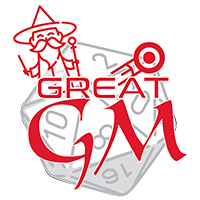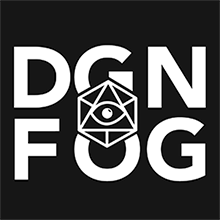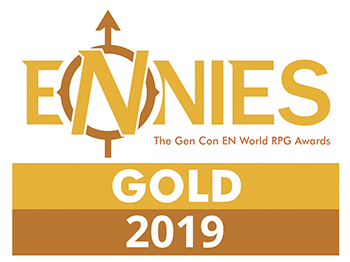Council of Elders
The Council of Elders in Frostholme is a governing body established after the signing of The Treaty of Unity in 1100. Comprising seven members, the council ensures a balanced representation of the three major races in the region—dwarves, goliaths, and elves. The councilors govern their respective cities within Frostholme, with a deliberate 3-3-1 split to prevent racial bias. Led by Elara Quickthought, the council includes Garek Ironheart, Sylva Shyheart, Viggo Kaldr, and Thrain Forgebeard, each overseeing military, environmental, cultural, and technological aspects. The council's primary objective is to maintain unity, foster collaboration, and address regional concerns, ensuring the prosperity and harmony of Frostholme.
Structure
High Elder - Elara Quickthough
Military Commander - Garek Ironheart
Environmental Advisor - Sylva Shyheart
Cultural Advisor - Viggo Kaldr
Technology and Infrastructure Advisor - Thrain Forgebeard
Trade and Foreign Affairs Advisor - Elenion Starweaver
Health and Well-being Advisor - Helga Stonehealer
Military Commander - Garek Ironheart
Environmental Advisor - Sylva Shyheart
Cultural Advisor - Viggo Kaldr
Technology and Infrastructure Advisor - Thrain Forgebeard
Trade and Foreign Affairs Advisor - Elenion Starweaver
Health and Well-being Advisor - Helga Stonehealer
History
Founding and The Treaty of Unity (1100):
The Frostholme Council was established in the year 1100, following the signing of The Treaty of Unity. This historic agreement brought together the diverse races of Frostholme - dwarves, goliaths, and elves - to foster cooperation and prevent racial bias in governance. The council structure, with a 3-3-1 split among the races, aimed to ensure equal representation and harmony among the different communities.
Early Years and Consolidation (1100-1200):
In its early years, the council faced challenges in uniting the distinct cities under its rule. A charismatic leader emerged, effectively steering the council through diplomatic intricacies. The establishment of key advisors contributed to the stabilization and growth of the region. Cities flourished under their guidance.
Expansion and External Relations (1200-1300):
With a leader overseeing foreign affairs from Remethemar, Frostholme expanded its influence and formed strong ties with neighboring regions. Trade flourished, and the region became a prominent player in the larger political landscape. The council's commitment to diplomacy and cultural exchange strengthened Frostholme's position, and the cities became renowned for their collaborative efforts in trade and the arts.
Challenges and Crisis Management (1300-1400):
The council faced its fair share of challenges, including external threats and internal conflicts. Military expertise proved crucial during times of crisis, while a focus on health and well-being became paramount in managing the aftermath of such events. Despite hardships, the council's resilience and unity ensured Frostholme's continued prosperity.
Modern Era and Ongoing Development (1400-1463):
As of the current year, the Frostholme Council remains a symbol of unity and cooperation. A leader continues to foster collaboration among the elders and oversee the continued growth of the region. The council's commitment to technological advancements, environmental sustainability, and cultural richness has solidified Frostholme's standing as a beacon of prosperity in the realm. With each advisor playing a vital role in the city they oversee, Frostholme stands poised for a future marked by progress, unity, and resilience.
The Frostholme Council was established in the year 1100, following the signing of The Treaty of Unity. This historic agreement brought together the diverse races of Frostholme - dwarves, goliaths, and elves - to foster cooperation and prevent racial bias in governance. The council structure, with a 3-3-1 split among the races, aimed to ensure equal representation and harmony among the different communities.
Early Years and Consolidation (1100-1200):
In its early years, the council faced challenges in uniting the distinct cities under its rule. A charismatic leader emerged, effectively steering the council through diplomatic intricacies. The establishment of key advisors contributed to the stabilization and growth of the region. Cities flourished under their guidance.
Expansion and External Relations (1200-1300):
With a leader overseeing foreign affairs from Remethemar, Frostholme expanded its influence and formed strong ties with neighboring regions. Trade flourished, and the region became a prominent player in the larger political landscape. The council's commitment to diplomacy and cultural exchange strengthened Frostholme's position, and the cities became renowned for their collaborative efforts in trade and the arts.
Challenges and Crisis Management (1300-1400):
The council faced its fair share of challenges, including external threats and internal conflicts. Military expertise proved crucial during times of crisis, while a focus on health and well-being became paramount in managing the aftermath of such events. Despite hardships, the council's resilience and unity ensured Frostholme's continued prosperity.
Modern Era and Ongoing Development (1400-1463):
As of the current year, the Frostholme Council remains a symbol of unity and cooperation. A leader continues to foster collaboration among the elders and oversee the continued growth of the region. The council's commitment to technological advancements, environmental sustainability, and cultural richness has solidified Frostholme's standing as a beacon of prosperity in the realm. With each advisor playing a vital role in the city they oversee, Frostholme stands poised for a future marked by progress, unity, and resilience.
Founding Date
1100
Type
Government, Leadership
Capital
Leader
Legislative Body
The council votes on the passing of laws and requires 5/7 votes.
The council meets every 5 years, the most recent meeting was in 1461 and the next is scheduled for 1466
Controlled Territories
Remove these ads. Join the Worldbuilders Guild









Comments